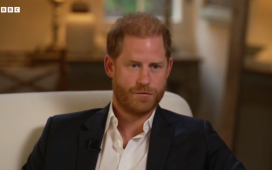Down an unassuming laneway on the fringe of Ballarat in regional Victoria, stands a slate grey building that’s shielded from prying eyes by a towering electric fence.
Inside is a place few get to see. It’s where clues become evidence, crimes are pieced together and mysteries are solved.
After giving our names at the metal security gate, an ABC cameraman, a photographer, and I make our way through the sliding doors and enter the Ballarat Forensic Hub.
Once signed in by the friendly security guard, we meet the group of forensic scientists who are the beating heart of this high-tech facility.
In contrast to the building’s steely exterior, the scientists are welcoming and excited to lift the veil on the work they do, which is usually shrouded in mystery.
The Ballarat Forensic Hub opened five years ago with the aim of helping police across the western region of the state solve crimes faster.
Prior to 2019, regional police had to travel to Victoria Police’s Forensic Services Department in Melbourne to have potential evidence examined.
The Ballarat hub’s manager, Erin Pirie, says staff use an innovative, multi-disciplinary approach to forensic testing.
This model, unique to the Ballarat and Morwell forensic hubs, equips the team with the knowledge to conduct several tests — such as DNA and drug analysis — on the same piece of potential evidence.
“They can determine what techniques to use first and determine the best approach to maximise evidence recovery,” Ms Pirie says.
“The quicker we can find forensic evidence, the quicker it can help police investigators identify persons of interest and solve crimes.”
Kidnapping case clue
The hub has assisted with many police investigations, including one involving a kidnapping.
Due to confidentiality, Ms Pirie must avoid specifics of the case.
“The victim had been tied up with cable-ties and cords,” Ms Pirie says.
“We initially thought the items were only suitable for biological evidence … however, the forensic officer realised they were also suitable for fingerprint analysis.”
Using the multi-disciplinary approach, Ms Pirie says, the forensic officer was able to uncover a fingerprint which matched a person of interest in the police investigation.
Thousands of items processed
The real-world impact of the hub is further highlighted by data released by Victoria Police to the ABC.
Since 2019, the facility has processed more than 12,000 pieces of potential evidence.
More than 4,000 of those items are associated with regional crime.
The hub has slashed travel time for regional police, too, saving members an estimated 23 hours of travel time each month.
“That time can now be used to concentrate on policing,” Ms Pirie says.
Scientists not police
While staff at the hub work hand-in-glove with police, they are not sworn officers and mostly trained in scientific disciplines.
During our tour of the hub’s laboratories, we meet Danny*, who demonstrates a drug analysis.
The type of drug and quantity identified by his test results assist police with making arrests and laying charges.
“I’ve worked for a decade in drug development and design,” Danny says.
“It’s really exciting to apply my science skills and background to a forensic setting.”
Danny also solves a common misconception perpetuated by television shows and movies.
“A lot of people think we can produce results overnight, but it does take time. We’re not as fast as CSI,” he says.
Women-dominated discipline
Across the state, the Victoria Police Forensic Services Department has 513 staff, of whom more than half are women.
At the Ballarat hub, most of the team of 11 are women.
“Depending on what sort of discipline, forensic science seems to attract more females than males,” Ms Pirie says.
“It’s a very rewarding job, there are so many challenges, so it keeps it very interesting keeping up with technology and doing everything we can to support the community.”
*The last names of forensic scientists Danny, Anya, and Yolanda have been withheld at the request of Victoria Police.











